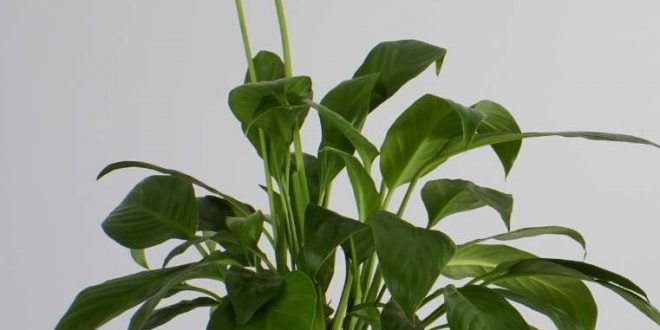Introduction
In this article, we provide detailed information on how to care for the Peace Lily Plant. If you’re looking to add elegance and greenery to your interiors, the Peace Lily Plant is one of the most suitable options.
This beautiful plant is easy to grow, featuring both stunning flowers and lush foliage. Its bright, textured leaves and elegant white flowers make it a standout choice for indoor spaces.
With proper care, the Peace Lily Plant can remain in bloom for extended periods during spring and autumn. By following the maintenance tips below, you can ensure your plant thrives and enhances the ambiance of your home.
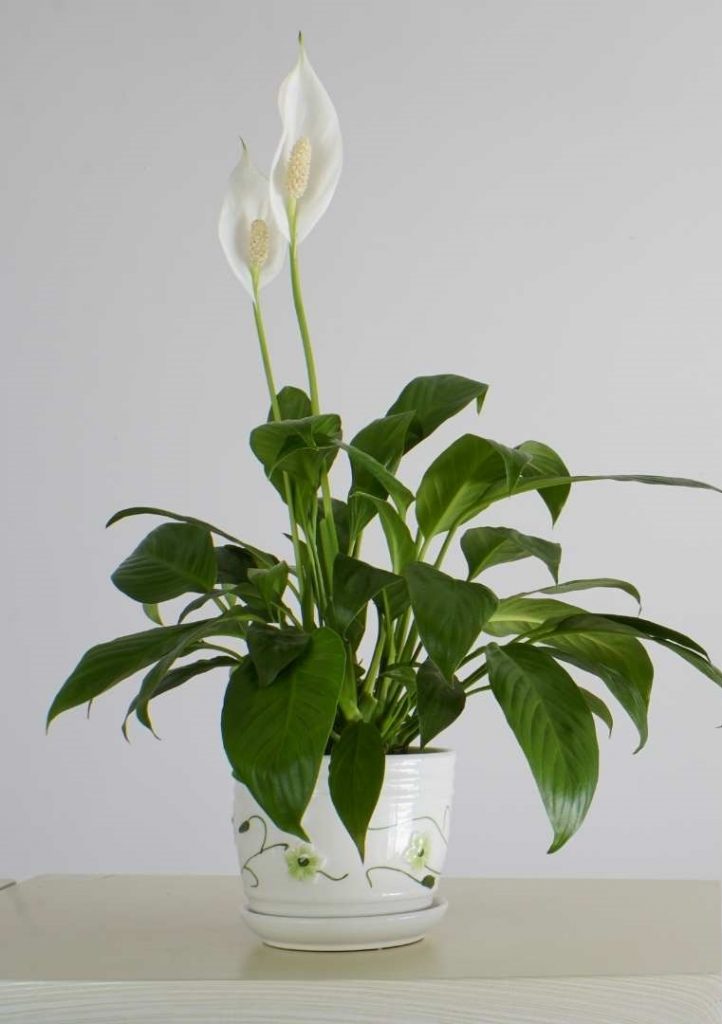
Benefits of the Peace Lily Plant
- The Peace Lily Plant improves air quality by removing toxic substances from the air, making it a popular choice for indoor spaces.
- It was featured in NASA’s Clean Air Study for its air-purifying properties.
- The “Mauna Loa” variety of the Peace Lily Plant has won the Royal Horticultural Society Award of Garden Merit.
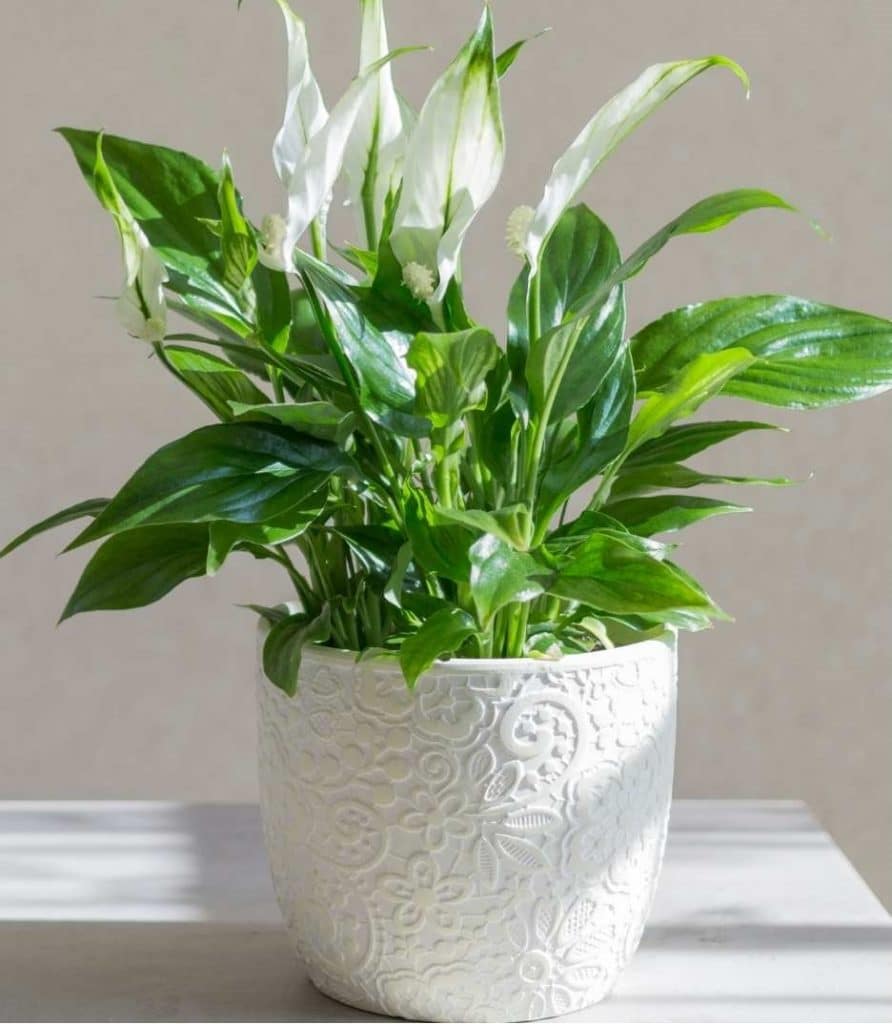
Basic Information About the Peace Lily Plant
- Scientific Name: Spathiphyllum spp.
- Common Names: Peace Lily, White Sails, Spathe Flower
- Origin: Tropical regions of the Americas and Southeast Asia
- Popular Varieties: Golden Delicious, White Stripe, Sensation, Domino, Little Angel, Mauna Loa Supreme, Power Petite, Mojo
- Toxicity: All parts of the plant contain calcium oxalate, which is toxic to pets and children. Keep it out of their reach.
Peace Lily Plant Care Tips
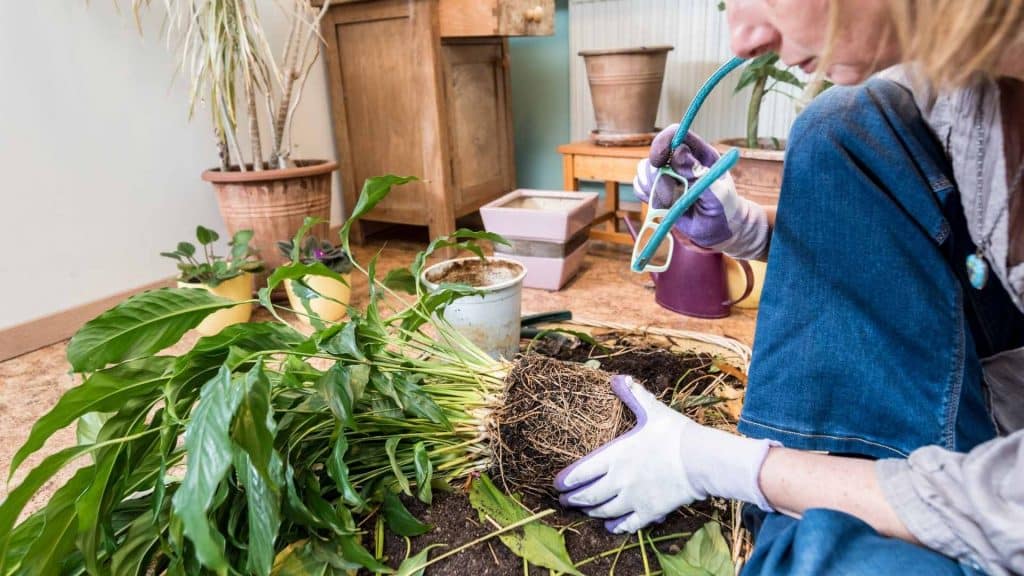
Caring for the Peace Lily Plant is straightforward when you follow these essential tips:
Watering and Humidity
- Keep the soil moist but not soggy. Overwatering can cause root rot.
- Drain excess water from the pot plate after watering.
- The plant thrives in high humidity (around 80%). Mist the leaves regularly, but avoid spraying the flowers.
- Use room-temperature water that is free of lime and chlorine.
Sunlight
- The Peace Lily Plant grows best in bright, indirect sunlight.
- Avoid direct sunlight, as it can scorch the leaves.
- In low-light environments, the leaves may fade, and the plant may appear weak.
Temperature
- Ideal temperature range: 10-28°C (50-82°F).
- Avoid exposing the plant to sudden temperature changes or cold drafts.
Soil
- Use mineral-rich, well-draining soil. A mix of garden soil, perlite, peat, and sand works well.
- Avoid compacted soil, as it restricts root growth and causes waterlogging.
Fertilizer
- Fertilize once every two weeks during spring and summer using a liquid fertilizer.
- No fertilizer is needed during autumn and winter.
Pruning
- Regularly prune yellowing, dried, or rotting leaves and stems.
- Cut flower stalks from the base after blooming to redirect the plant’s energy to healthy leaves.
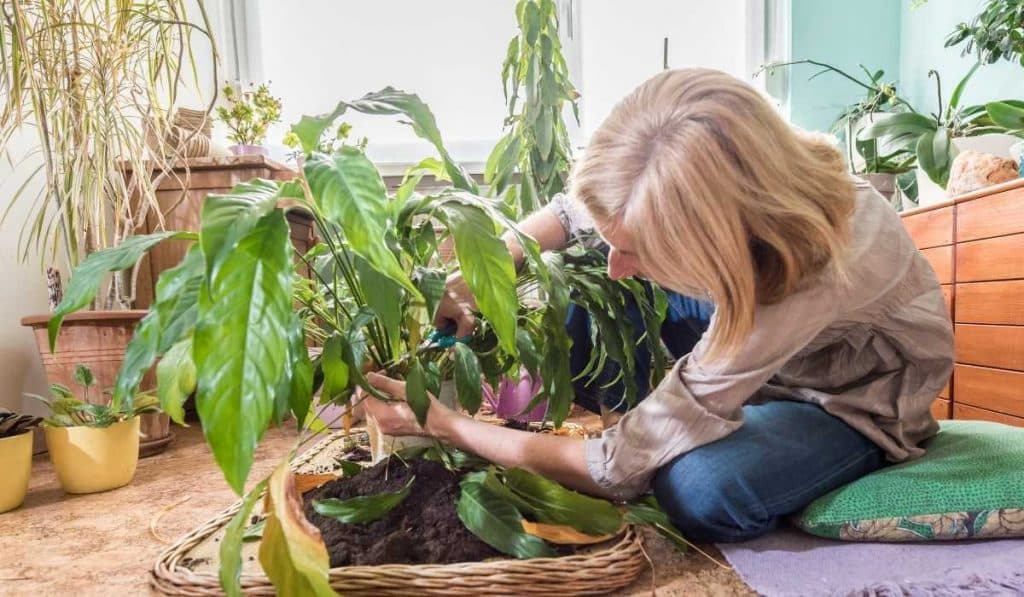
Troubleshooting Common Peace Lily Plant Problems
- Bent or Drooping Leaves: Indicates a lack of water or humidity. Adjust your watering schedule and increase humidity.
- Yellowing or Darkened Leaves: Caused by direct sunlight. Move the plant to a spot with indirect light.
- Browning Leaf Tips: This can result from overwatering, underwatering, over-fertilizing, or low humidity. Address the specific issue accordingly.
- Lack of Flowers: This may be due to insufficient light or nutrient-poor soil. Ensure the plant receives adequate light and consider adding a balanced fertilizer.
Additional Peace Lily Plant Care Tips
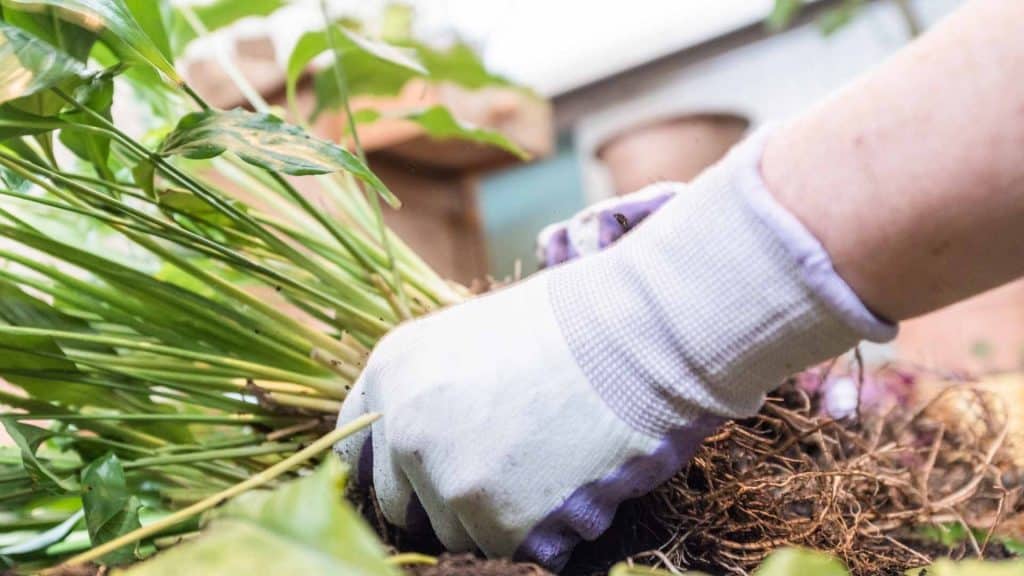
Changing the Pot
- The Peace Lily Plant does not require frequent repotting.
- Repot only when necessary, such as when the plant outgrows its pot or if the soil needs refreshing.
- Use a slightly larger pot with fresh, nutrient-rich soil.

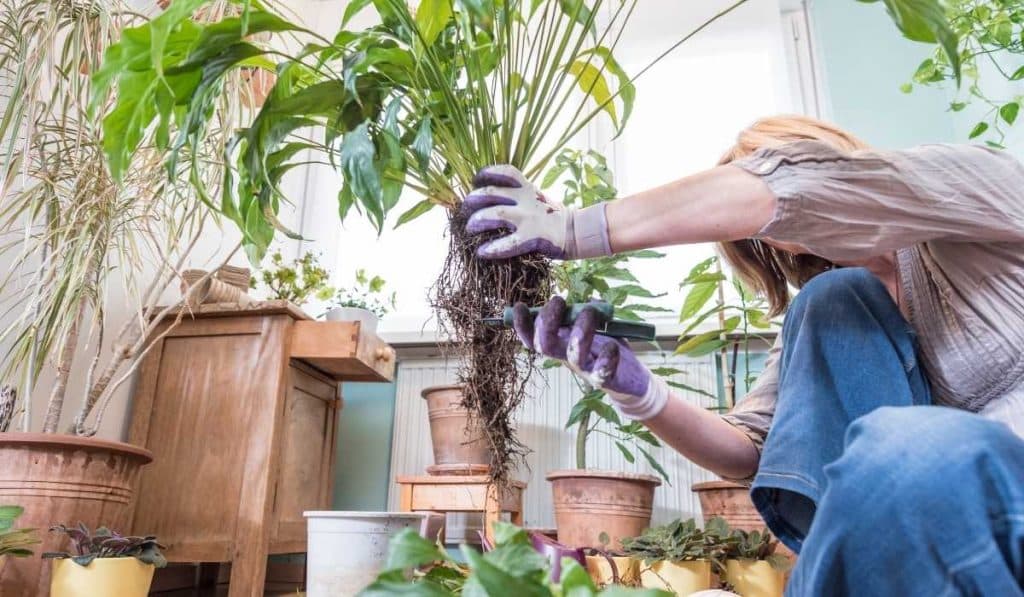
Propagation
- The plant can be propagated by separating small shoots with roots from the mother plant.
- Transfer the separated shoots into a smaller pot with moist (but not wet) soil.
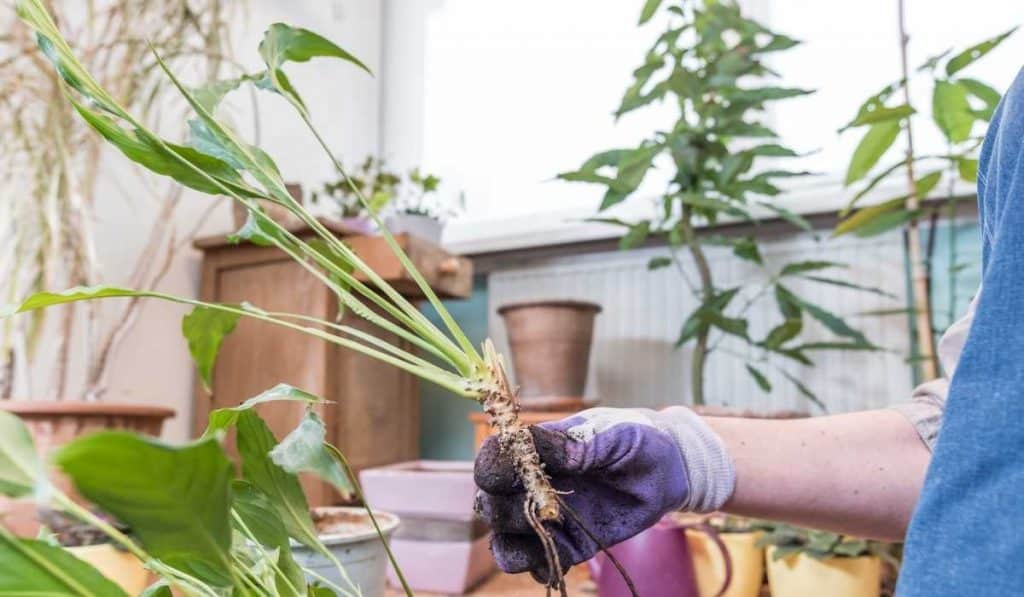
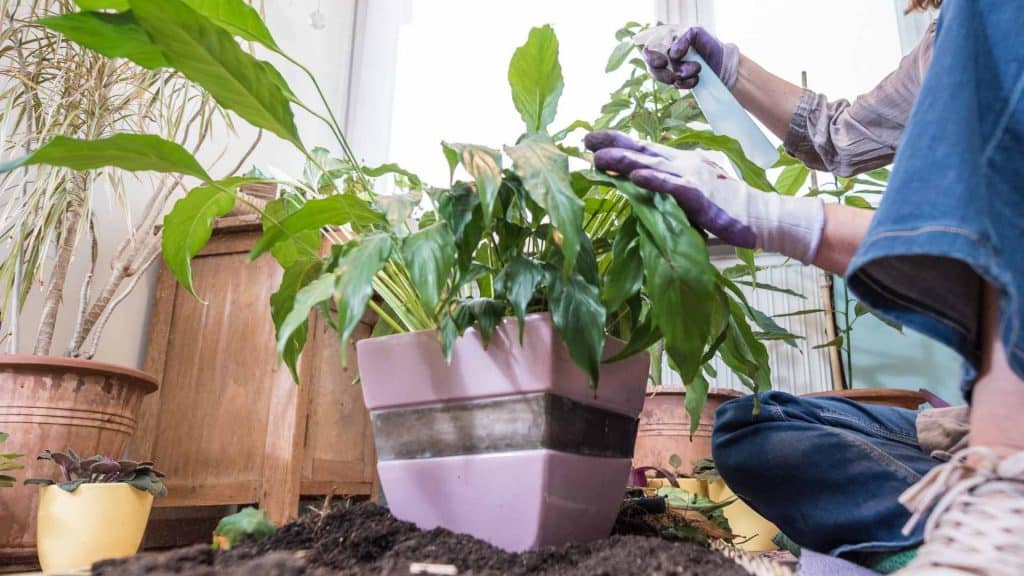
Pests and Diseases
- Common pests include red spider mites, aphids, and mealybugs.
- Regularly inspect the plant for signs of infestation and treat with appropriate pest control methods.
Key Factors to Remember
- Water and Humidity: Keep the soil moist and maintain high humidity levels.
- Sunlight: Provide bright, indirect light. Avoid direct sunlight.
- Temperature: Keep the plant in a stable environment with temperatures between 10-28°C.
- Soil: Use well-draining, organic-rich soil.
- Pruning: Regularly remove dry or damaged leaves to promote healthy growth.
By following these care tips, you can enjoy a thriving and beautiful Peace Lily Plant in your home.
Fertilizer
Fertilizer requirement is less. However, you can add liquid fertilizer once every 2 weeks in the spring months. You do not need to fertilize in autumn and winter.
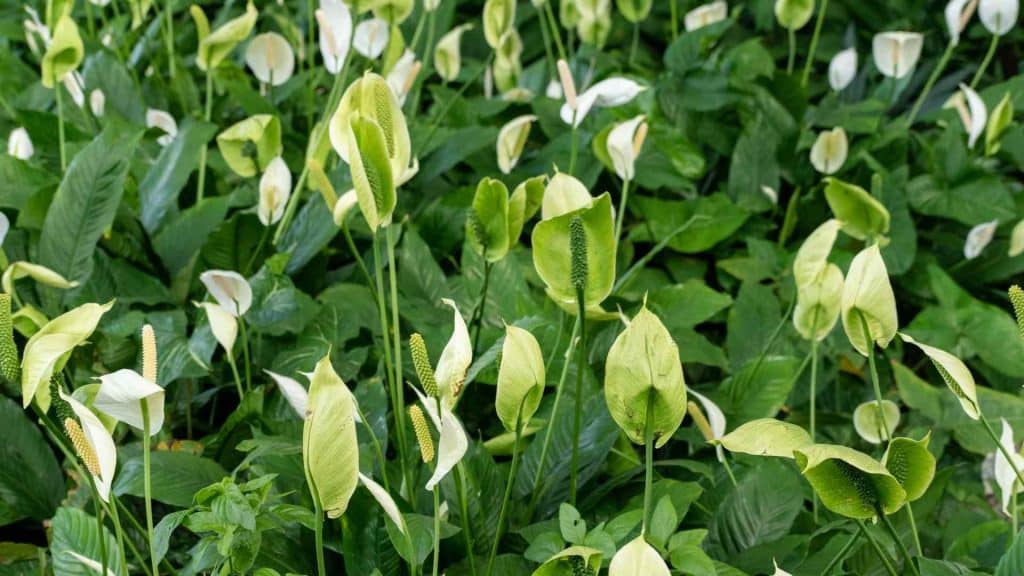
Conclusion
The Peace Lily Plant is an excellent choice for enhancing your indoor spaces with its elegant appearance and air-purifying properties. With the right care, this low-maintenance plant will reward you with lush foliage and stunning blooms. Whether you’re a seasoned plant enthusiast or a beginner, the Peace Lily Plant is a fantastic addition to your home.
By following these guidelines, you can ensure your Peace Lily Plant remains healthy, vibrant, and a focal point of your interior decor. You can learn more about Peace Lily in our article titled “Peace Lily: A Simple Guide to a Beautiful Plant“.
FAQ About Peace Lily Plant
What is a Peace Lily Plant?
The Peace Lily Plant (Spathiphyllum spp.) is a popular indoor plant known for its elegant white flowers and lush green leaves. It is easy to care for and is also recognized for its air-purifying properties.
How do I care for a Peace Lily Plant?
To care for a Peace Lily Plant:
- Keep the soil moist but not soggy.
- Provide bright, indirect sunlight.
- Maintain high humidity by misting the leaves.
- Fertilize once every two weeks during spring and summer.
- Prune yellowing or dried leaves regularly.
How often should I water my Peace Lily Plant?
Water your Peace Lily Plant when the top inch of soil feels dry. Ensure the pot drains excess water to prevent root rot. Reduce watering during autumn and winter when the plant enters its resting phase.
Does the Peace Lily Plant need sunlight?
Yes, the Peace Lily Plant thrives in bright, indirect sunlight. However, it should not be exposed to direct sunlight, as it can scorch the leaves. It can also tolerate low-light conditions, but growth may slow, and blooms may reduce.
Why are the leaves of my Peace Lily Plant turning yellow?
Yellowing leaves can be caused by:
- Overwatering or underwatering.
- Exposure to direct sunlight (sunburn).
- Nutrient deficiencies in the soil.
Address these issues by adjusting watering, moving the plant to indirect light, or fertilizing as needed.
Why are the tips of my Peace Lily Plant’s leaves turning brown?
Brown leaf tips can result from:
- Overwatering or underwatering.
- Over-fertilizing.
- Low humidity levels.
Ensure proper watering, reduce fertilizer use, and increase humidity by misting the plant or using a humidifier.
How do I make my Peace Lily Plant bloom?
The Peace Lily Plant blooms when it receives adequate light and nutrients. If your plant is not blooming:
- Move it to a brighter location with indirect sunlight.
- Fertilize with a balanced liquid fertilizer every two weeks during spring and summer.
Is the Peace Lily Plant toxic?
Yes, all parts of the Peace Lily Plant contain calcium oxalate, which is toxic if ingested. It can cause irritation to the mouth, throat, and stomach. Keep the plant out of reach of pets and children. You may be interested in our article on “DO YOU KNOW THE TOXIC INDOOR PLANTS“
How do I propagate a Peace Lily Plant?
You can propagate a Peace Lily Plant by dividing it:
- During repotting, gently separate small shoots with roots from the mother plant.
- Plant the separated shoots in a small pot with moist, well-draining soil.
How often should I repot my Peace Lily Plant?
Repotting is only necessary every 1-2 years or when the plant outgrows its pot. Use a slightly larger pot with fresh, nutrient-rich soil. Avoid frequent repotting, as the Peace Lily Plant prefers stability.
What kind of soil is best for a Peace Lily Plant?
The Peace Lily Plant grows well in mineral-rich, well-draining soil. A mix of garden soil, perlite, peat, and sand is ideal. This ensures proper aeration and prevents waterlogging.
What temperature does the Peace Lily Plant prefer?
The Peace Lily Plant thrives in temperatures between 10-28°C (50-82°F). Avoid exposing it to sudden temperature changes, cold drafts, or environments below 10°C (50°F).
How can I increase the humidity for my Peace Lily Plant?
To increase humidity:
- Mist the leaves regularly (avoid misting flowers).
- Place a tray of water near the plant.
- Use a humidifier in the room.
What pests affect the Peace Lily Plant, and how do I treat them?
Common pests include:
- Spider mites
- Aphids
- Mealybugs
Treat infestations by:
- Cleaning the leaves with a damp cloth.
- Spraying the plant with insecticidal soap or neem oil.
Can the Peace Lily Plant survive in low light?
Yes, the Peace Lily Plant can survive in low-light conditions, but it may grow slower, and flowers may be less frequent. For optimal growth, place it in bright, indirect sunlight.
Why does my Peace Lily Plant droop?
Drooping leaves are usually a sign of dehydration. Water the plant thoroughly, and it should recover within a few hours. Persistent drooping may indicate root rot from overwatering.
Do I need to fertilize my Peace Lily Plant?
Fertilizing is not essential but can encourage healthy growth and blooms. Use a balanced liquid fertilizer every two weeks during spring and summer. Avoid fertilizing in autumn and winter.
How long does a Peace Lily Plant live?
With proper care, a Peace Lily Plant can live for several years, often 3-5 years or more. Regular pruning, adequate watering, and proper lighting can extend its lifespan.
Does the Peace Lily Plant clean the air?
Yes, the Peace Lily Plant is known for its air-purifying properties. It removes toxins like benzene, formaldehyde, and carbon monoxide, improving indoor air quality.
Can I keep a Peace Lily Plant in my bedroom?
Yes, the Peace Lily Plant is an excellent choice for bedrooms. Its air-purifying abilities and low-light tolerance make it a great addition to indoor spaces, including bedrooms.

